Quantum Science Audio series Fuses
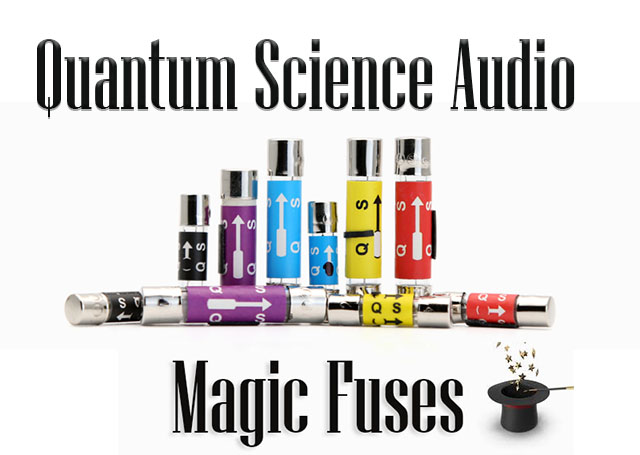
The Best just got So Much Better!
 Tweaks are one of my favorite subjects of discussion. The reason is, they’re more accessible to A/B in (and out) various systems. I’ve tried enough to value some over others. Newcomer Quantum Science Audio has introduced a new level of aftermarket tweaks that once again address AC distortions and whose performance has lifted my expectations beyond anything I could have believed sonically possible. Steven Tsang is the Quantum Science Audio team leader. He’s disciplined in electronic engineering and launched QSA in early 2020. Located in Scottsdale, AZ, and Hong Kong (where Tsang spent many years as an audio consultant), Tsang’s main obsession centers around aftermarket fuses that include; thermal, automobile, AC inlets, AC outlets, and AC panel breakers. Not exactly sure how Steven Tsang and I met (Absolare CEO Kerem Kucukaslan spoke very highly of his products), but I am delighted we did. I know we began discussions at the beginning of the Covid-19 pandemic, and attempting to evaluate his creations over the past year has helped a great deal in taking my mind off all the death and dying. The first thing Steven Tsang did was send me some of his entry-level fuses in an attempt to test my ears – and his products. I didn’t mention this to Tsang, but I was already familiar with aftermarket fuses and had already tried many like; Audiomagic, Synergistic, Furutech, Hi-Fi Tuning, WA-Quantum, and my favorite, Verictum of Poland.
Tweaks are one of my favorite subjects of discussion. The reason is, they’re more accessible to A/B in (and out) various systems. I’ve tried enough to value some over others. Newcomer Quantum Science Audio has introduced a new level of aftermarket tweaks that once again address AC distortions and whose performance has lifted my expectations beyond anything I could have believed sonically possible. Steven Tsang is the Quantum Science Audio team leader. He’s disciplined in electronic engineering and launched QSA in early 2020. Located in Scottsdale, AZ, and Hong Kong (where Tsang spent many years as an audio consultant), Tsang’s main obsession centers around aftermarket fuses that include; thermal, automobile, AC inlets, AC outlets, and AC panel breakers. Not exactly sure how Steven Tsang and I met (Absolare CEO Kerem Kucukaslan spoke very highly of his products), but I am delighted we did. I know we began discussions at the beginning of the Covid-19 pandemic, and attempting to evaluate his creations over the past year has helped a great deal in taking my mind off all the death and dying. The first thing Steven Tsang did was send me some of his entry-level fuses in an attempt to test my ears – and his products. I didn’t mention this to Tsang, but I was already familiar with aftermarket fuses and had already tried many like; Audiomagic, Synergistic, Furutech, Hi-Fi Tuning, WA-Quantum, and my favorite, Verictum of Poland.
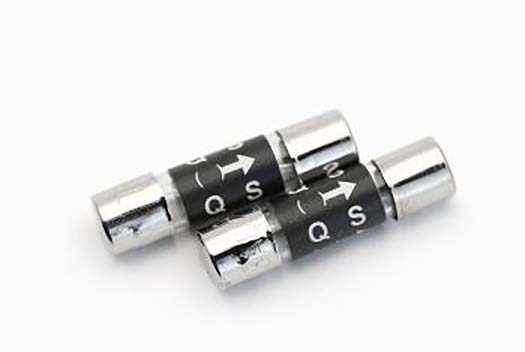
 Tsang sent me his most affordable Black series fuses (photo above), which retailed for $28.50. After their arrival, burn-in, and a few days of listening, I came to a quick conclusion and told him, “thank you, appreciate the offer but these do not work in my system.” Tsang wrote back, “you’re the first person that’s had this negative experience!” These back and forth emails went on for days before Tsang asked out of curiosity, “what direction were the arrows pointing when placed inside the amplifiers?” Oops, I didn’t know there were arrows on the fuses, I responded. Okay, I pulled out my little magnifier and did see the arrows on these mini (20 mm long) QSA fuses. Tsang suggested each should point inward toward the component (if your fuses face sideways, experimentation is required). Upon pointing all four fuses inward, I turned on my Behold BPA-768 amps, turned on some music listened for a few minutes before hearing some notable changes over my initial impressions. As compared to my reference aftermarket Poland-made Verictum fuses, the QSA Black sounded just a tad less liquid and resolving. This observation was at first-blush and with no real burn-in, so I just let the system play for the next couple of days before any serious listening took place.
Tsang sent me his most affordable Black series fuses (photo above), which retailed for $28.50. After their arrival, burn-in, and a few days of listening, I came to a quick conclusion and told him, “thank you, appreciate the offer but these do not work in my system.” Tsang wrote back, “you’re the first person that’s had this negative experience!” These back and forth emails went on for days before Tsang asked out of curiosity, “what direction were the arrows pointing when placed inside the amplifiers?” Oops, I didn’t know there were arrows on the fuses, I responded. Okay, I pulled out my little magnifier and did see the arrows on these mini (20 mm long) QSA fuses. Tsang suggested each should point inward toward the component (if your fuses face sideways, experimentation is required). Upon pointing all four fuses inward, I turned on my Behold BPA-768 amps, turned on some music listened for a few minutes before hearing some notable changes over my initial impressions. As compared to my reference aftermarket Poland-made Verictum fuses, the QSA Black sounded just a tad less liquid and resolving. This observation was at first-blush and with no real burn-in, so I just let the system play for the next couple of days before any serious listening took place.
 Coming back for more listening a few days later, I turned on Michael Kiwanuka’s Love & Hate, which I had been grooving on since discovering this talented singer/songwriter some years ago. Again, the overall sound seemed to enhance the emotional content, while the overall performance appeared a tad sweeter, cleaner, and better focused. The image stability wasn’t the usual type either; I noticed a hair more three-dimensionality and a roundness on the instrument’s outlines. When Tsang reminded me that this was, in fact, his $28.50 Black series entry-level fuse, I shook my head with satisfaction. The Polish-made Verictum fuses served as my reference for a few years, and they retailed for many times the price too, which made them expensive and the best I had heard. Until now. I would go as far as stating his Black fuses were as good in some areas but ultimately not as dynamically alive as the Polish brand. How Steven Tsang was able to compete so favorable with my reference fuse at a fraction of the price is a mystery. But that’s only an introduction to my adventures with Steven Tsang and his QSA fuses.
Coming back for more listening a few days later, I turned on Michael Kiwanuka’s Love & Hate, which I had been grooving on since discovering this talented singer/songwriter some years ago. Again, the overall sound seemed to enhance the emotional content, while the overall performance appeared a tad sweeter, cleaner, and better focused. The image stability wasn’t the usual type either; I noticed a hair more three-dimensionality and a roundness on the instrument’s outlines. When Tsang reminded me that this was, in fact, his $28.50 Black series entry-level fuse, I shook my head with satisfaction. The Polish-made Verictum fuses served as my reference for a few years, and they retailed for many times the price too, which made them expensive and the best I had heard. Until now. I would go as far as stating his Black fuses were as good in some areas but ultimately not as dynamically alive as the Polish brand. How Steven Tsang was able to compete so favorable with my reference fuse at a fraction of the price is a mystery. But that’s only an introduction to my adventures with Steven Tsang and his QSA fuses.
Next, Tsang allowed me to hear his more expensive offering in his Purple $711.00 fuse (skipping past his $71.00 Light Blue and $213.00 Yellow series). I asked, “why so expensive?” His answer didn’t quiet my consternation much. Tsang stated, “the technology in my fuses outperforms AC power cords and speaker cables many times the price! Some weeks later, a special shipment arrived via USPS from QSA. I opened the box with great anticipation and installed the four QSA Purple series into my Behold BPA-768 series amplifiers (two per amplifier). Mindful of the directionality, I installed them and just dialed up some songs from my Memory Player’s playlist – placed the system on repeat and came back up the next day.
 I don’t know how many of you are familiar with jazz saxophonist Hank Crawford, but his 1975 LP, “I hear a symphony,” (which I purchased in 1975!), sounded more alive, yet more relaxed and soulful than I can recall any time previous. This period was largely experimental regarding jazz musicians and their desire to gain fame off disco’s success. With David Matthews’ artistic direction, this big-band recording served as a cross between ’60s California-jazz ala Don Sebeski and disco music. For me, it works. Track two, Madison serves as an uptempo treat that excels at getting your toes tapping with Crawford’s lyrical playfulness alongside some tight big-band arrangments. The strings here sounded stellar and silkier than I could have believed possible, being very familiar with this dated recording. The ease, dynamic prowess, bass articulation, and speed were also outstandingly more pronounced. The system appeared to have more of a jump factor but simultaneously remained eerily quiet and relaxed. Dynamics poured forth with a great sense of foundation, resolve and control. I just sat there dumbfounded, shaking my head, thinking this is the result of a fuse?
I don’t know how many of you are familiar with jazz saxophonist Hank Crawford, but his 1975 LP, “I hear a symphony,” (which I purchased in 1975!), sounded more alive, yet more relaxed and soulful than I can recall any time previous. This period was largely experimental regarding jazz musicians and their desire to gain fame off disco’s success. With David Matthews’ artistic direction, this big-band recording served as a cross between ’60s California-jazz ala Don Sebeski and disco music. For me, it works. Track two, Madison serves as an uptempo treat that excels at getting your toes tapping with Crawford’s lyrical playfulness alongside some tight big-band arrangments. The strings here sounded stellar and silkier than I could have believed possible, being very familiar with this dated recording. The ease, dynamic prowess, bass articulation, and speed were also outstandingly more pronounced. The system appeared to have more of a jump factor but simultaneously remained eerily quiet and relaxed. Dynamics poured forth with a great sense of foundation, resolve and control. I just sat there dumbfounded, shaking my head, thinking this is the result of a fuse?
Through discussions with Tsang, I became convinced this guy’s up to something quite unusual in terms of how the QSA team can make a fuse perform such wonders in an amplifier or, according to QSA, any piece of equipment that benefits from his technology. Before I could further confirm my findings, I asked Tsang to send me some extra Purple fuses for a few more ST writers who I know would appreciate them as well. The question I had was, “would they be able to hear the differences too?” Social distancing kept us away from personal listening sessions, so Tsang agreed. Some weeks later, a shipment arrived at the homes of Dan Secula and Ron Cook. The one thing we all have in common besides a well-dialed-in setup is the Behold amplifiers and Laufer Teknik Memory Player. We are equally enthusiastic about the art of tweaking to harness the most out of what we already own.
Both Dan and Ron were surprised at the cost ($711 ea) of the QSA Purple series fuses. Like me, both accepted the offer because they wanted to judge the performance based on its sound criteria rather than just being ultra-expensive. The phone began to heat up with conference calls within days, discussing the many sonic impressions of the QSA series Purple fuses. Both Dan and Ron felt these were easily the best fuses they have heard, which echoed my sentiments. The words texture, sweetness, depth, definition, punch, low-end authority, and clarity were the words that resurfaced the most. I was somewhat relieved because I knew this amount of sonic improvement would be hard, if not impossible, to believe unless they heard it for themselves.
Pushing the Limits
 Tsang contacted me some months later, informing me that he had reached new heights concerning his QSA technology. By this time, he got little fight out of me because I was contented with the sonics of the current Purple fuses. That is until he revealed the price – $1422 each! That’s crazy? I lamented, “This is just way too much to ask for a fuse, sir.” Tsang’s only response again was, “this fuse will outperform any tweak in your system. Looking at my components, I started taking an inventory. I’ve some serious tweaks in my space, namely the Novum Resonators, various Entreq ground boxes, Jack Bybee’s iQSE Fatboys, alongside Kemp’s AC conditioner and Frank Acoustics Ultra Bank products. All are excellent. None are cheap.
Tsang contacted me some months later, informing me that he had reached new heights concerning his QSA technology. By this time, he got little fight out of me because I was contented with the sonics of the current Purple fuses. That is until he revealed the price – $1422 each! That’s crazy? I lamented, “This is just way too much to ask for a fuse, sir.” Tsang’s only response again was, “this fuse will outperform any tweak in your system. Looking at my components, I started taking an inventory. I’ve some serious tweaks in my space, namely the Novum Resonators, various Entreq ground boxes, Jack Bybee’s iQSE Fatboys, alongside Kemp’s AC conditioner and Frank Acoustics Ultra Bank products. All are excellent. None are cheap.
And Tsang thinks his $1422 Red series fuses are going outperform all my tweaks? Okay, then let’s give them a listen.

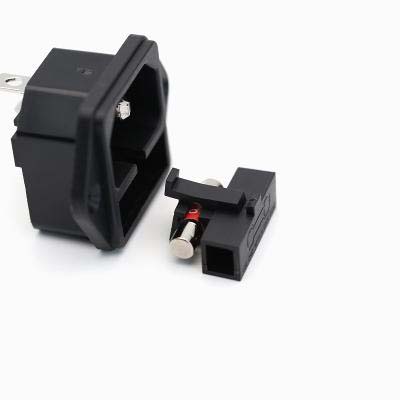
Some weeks later, a small USPS package arrived at my doorstep. Peering inside this cardboard box was a small black and gray jewelry case with the letters QSA laser inscribed on its cover. Nice touch, I thought. Lifting the lid revealed four 12.5 amp Red series fuses and one 5 amp Red series fuse for my Behold preamp. Knowing the sonic improvements heard between the standard $28.50 Black series to the $711.00 Purple model, I admit, I wasn’t sure what to expect. Insuring directionality, I just popped them in and just let the music play for the next 24 hours. Upon my return, I immediately noticed how much of a deafening silence had crept over the system. Weirder was this quiet did not affect the high frequencies negatively whatsoever. In fact, the opposite occurred. The top-end opened up with a sense of relaxation and ease, which aided a remarkable sense of brilliance. Bass was quicker afoot and possessed details that made me sit up and pay closer attention. Voices appeared more transparent but with more harmonic realism, flesh tone, and focus. Out of all these obvious improvements, the absolute lack of noise stood out the most. All in all, the QSA Red series fuses introduced an altogether different sonic fabric that is rarely associated with digital sources and its playback – regardless of format or resolution. This, dear reader, is the magic of analog!
Tsang informed me some six months later that he had made another scientific breakthrough with the introduction of his Red/Black reference series fuses. The first words out of my mouth were, “okay how much?” When he stated $2,844.00 each, I thought to myself, Tsang had completely lost it. I wrote at length of the two rich people I knew in the world that probably would buy his $1,422.00 fuse. I know NO ONE who would purchase one for double that. Tsang kindly reminded me that his entry-level fuse retails for only $28.50, and it nearly outperformed all the numerous fuses I had on hand. But my response was simple “in a perfect world, the world’s best fuse should only cost $28.50!”
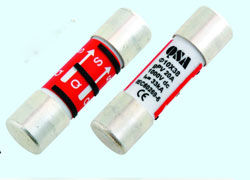
 Physically, nothing is outstanding about the QSA fuses as they look pretty ordinary – as do every other aftermarket fuse I’ve owned. The Red/Black series fuses are distinguished from the Red series by their two black rings located around each fuse. If one looks closer, you will also notice a single crystal at the base of each fuse. Tsang likes to keep his technology close to his vest however, Tsang admits that he uses a high grade of Graphene mix to produce the results he desires. Still, his many emails have offered a small glimpse behind his QSA technology: “The QSA brand uses our world’s only Musical Metal Molecule Alignment Technology (MMMAT) and Metal Active Technology (MAT). These produce a more efficient flow of electrons which allows for greater conductivity. Also, according to Tsang, “the QSA technology removes Bottle-neck Distortions (BND), while independent studies have shown that our fuse technology improves the performance 70 to 80%, while the aftermarket AC power cord is only 20 to 30%.”
Physically, nothing is outstanding about the QSA fuses as they look pretty ordinary – as do every other aftermarket fuse I’ve owned. The Red/Black series fuses are distinguished from the Red series by their two black rings located around each fuse. If one looks closer, you will also notice a single crystal at the base of each fuse. Tsang likes to keep his technology close to his vest however, Tsang admits that he uses a high grade of Graphene mix to produce the results he desires. Still, his many emails have offered a small glimpse behind his QSA technology: “The QSA brand uses our world’s only Musical Metal Molecule Alignment Technology (MMMAT) and Metal Active Technology (MAT). These produce a more efficient flow of electrons which allows for greater conductivity. Also, according to Tsang, “the QSA technology removes Bottle-neck Distortions (BND), while independent studies have shown that our fuse technology improves the performance 70 to 80%, while the aftermarket AC power cord is only 20 to 30%.”
Technical jargon like above reads like nebulous mumbo-jumbo. I’ve read enough background and white papers to know they mean little to this writer. For me, performance tells everything. I wanted to hear the differences, if any, between the Red/Black series fuses over the already excellent Red series. After that, I may decide to revisit the background technology further. As predicted, Tsang sent his Red/Black for my sonic perusal. Some weeks later, they arrived. However, before any serious listening was done, I installed them and waited for 24-hours as per Tsang’s instructions. When I got back up to my listening room, Gregory Porter’s When Love was King from his “Nat King Cole” collection was tuned and ready to go.
I’m Con-Fused
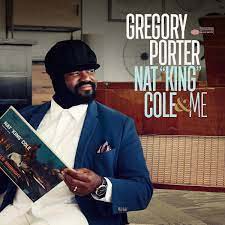 I had the luxury of knowing Gregory Porter and even had him as a guest, right here in my listening room. Gregory gave our mutual friend Carlos Sanchez an advance, pre-mastered copy of his Nat King Cole recording. As a result, it sounded rougher on its edges while the orchestra seemed a tad too distant and indistinct (which the recording engineer usually fixes in the post-mastering process). Via the QSA Red/Black fuses, the orchestra sounded more visible and present in a way I hadn’t noticed prior. They not only sounded as though I could count each musician and their location on stage, but they also appeared to surround Gregory in a semi-circle that extended beyond my Sunny Majestic horn loudspeakers’ physical location. That’s a hell of a trick when you consider the Sunny Majestics are imposing horns and weigh over 1000 lbs each! Additionally, the system became more dynamically expressive while expanding the air in and around the instruments—this increased sense of bloom and three-dimensionality gave new meaning to this already fabulous song.
I had the luxury of knowing Gregory Porter and even had him as a guest, right here in my listening room. Gregory gave our mutual friend Carlos Sanchez an advance, pre-mastered copy of his Nat King Cole recording. As a result, it sounded rougher on its edges while the orchestra seemed a tad too distant and indistinct (which the recording engineer usually fixes in the post-mastering process). Via the QSA Red/Black fuses, the orchestra sounded more visible and present in a way I hadn’t noticed prior. They not only sounded as though I could count each musician and their location on stage, but they also appeared to surround Gregory in a semi-circle that extended beyond my Sunny Majestic horn loudspeakers’ physical location. That’s a hell of a trick when you consider the Sunny Majestics are imposing horns and weigh over 1000 lbs each! Additionally, the system became more dynamically expressive while expanding the air in and around the instruments—this increased sense of bloom and three-dimensionality gave new meaning to this already fabulous song.
The QSA Red/Black fuses redefine the oft-used term transparency. They do not achieve this by merely providing excellent levels of transparency alone. The real achievement, I feel, is how naturally the music flows within that super transparent window. How much these low-level distortions interfere with the harmonic integrity of the overall presentation is shocking. The QSA Red/Black series fuses’ impact on the music’s PRaT (Pace Rhythm and Timing) proved enlightening. The ability to just want to sit and listen and pull out song after song has never felt so strong. Old songs sounded exhilaratingly anew. At one point, I found myself stuck in a time capsule for 30-days straight, enjoying and appreciating the music of Duke Ellington and his orchestra like never before.
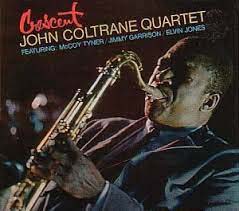 Listening to John Coltrane’s Lonnie’s Lament from his 1964 “Crescent” album highlighted this famous quartet’s bandmates more than it did Coltrane. Pianist McCoy Tyner never sounded so dynamically charged and see-through via the QSA Red/Black lens. Bassist Jimmy Garrison’s rhythmic communication seemed to drive Elvin Jones’ into a slow frenzy on his mallets on Drum Thing. Now I know why they nicknamed him “the Drum Machine.” I’ve been playing this CD for over 30 years, and I admit to being able to hear the felt of the mallets hit the drums this way for the first time!
Listening to John Coltrane’s Lonnie’s Lament from his 1964 “Crescent” album highlighted this famous quartet’s bandmates more than it did Coltrane. Pianist McCoy Tyner never sounded so dynamically charged and see-through via the QSA Red/Black lens. Bassist Jimmy Garrison’s rhythmic communication seemed to drive Elvin Jones’ into a slow frenzy on his mallets on Drum Thing. Now I know why they nicknamed him “the Drum Machine.” I’ve been playing this CD for over 30 years, and I admit to being able to hear the felt of the mallets hit the drums this way for the first time!
While pondering the reasons behind the QSA’s extraordinary abilities to quell noises I never knew existed, to harness and further lift my Behold amplifier’s overall performance continues to astound. Tsang’s challenge is that his fuse technology would remove “bottle-necking” and thus potentially outperform your best speaker cables, AC power cords, or any tweak you can think of ultimately came back to haunt me. If I hadn’t heard the analogy of “bottle-necking,” Tsang mentioned, I too would have used that term after hearing how wide-open my system now sounds. The Behold BPA-768 amplifiers have always been among my favorites, even with stock 50-cent fuses. I’ve since tried a series of fuses from those mentioned earlier that created noticeable levels of improvements for which I have become wholly grateful. I’ve been using these identical amplifiers since 2005, and they remain one best solid-state amplifiers I have ever heard. After pairing them with the QSA Red/Black series fuses, I now believe the Behold is among the best amplifiers I’ve ever heard, period – solid-state, tube, or otherwise!
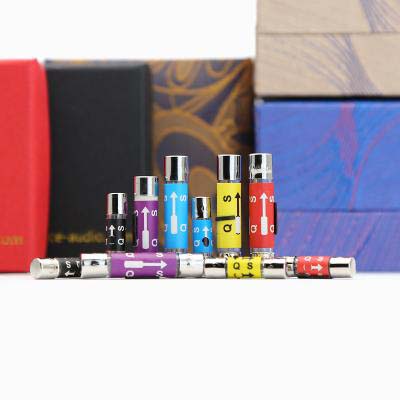
 Looking back, I’ve placed many expensive speaker cables, AC cords, and fancy conditioners in my system over the years. All provided major upclicks in the areas we all feel are of utmost importance. However, none did what the QSA Red/Black fuses have provided in terms of sonic purification. Yet, all were much more expensive. If your personal sonic preferences are similar to mine, (1): purity of signal, (2); tonality, (3) and engaging performances, then you ought to place the QSA fuses on your shortlist. QSA’s entry-level $28.50 Black series is the way to go first, especially tweakers on a budget. I highly recommend them since they nearly matched the performance of the far more expensive Verictum fuses. In the final analysis, the real question is: does spending $2844 on the Red/Black series fuses make sense? I cannot answer that question for you. However, I can tell you this: many high-end audio tweaks I’ve heard sound great, but none have matched the QSA’s remarkable performance. I repeat, none. That a mere fuse is doing this alone is a complete mystery to me. To think that something so simple as a circuit fuse holder could potentially hold back so much vital information is alarming. After more than twenty-two years of research, it appears Steve Tsang and his team, have finally discovered a way to break the code and allow the music to flow in a way I have not experienced outside of changing components.
Looking back, I’ve placed many expensive speaker cables, AC cords, and fancy conditioners in my system over the years. All provided major upclicks in the areas we all feel are of utmost importance. However, none did what the QSA Red/Black fuses have provided in terms of sonic purification. Yet, all were much more expensive. If your personal sonic preferences are similar to mine, (1): purity of signal, (2); tonality, (3) and engaging performances, then you ought to place the QSA fuses on your shortlist. QSA’s entry-level $28.50 Black series is the way to go first, especially tweakers on a budget. I highly recommend them since they nearly matched the performance of the far more expensive Verictum fuses. In the final analysis, the real question is: does spending $2844 on the Red/Black series fuses make sense? I cannot answer that question for you. However, I can tell you this: many high-end audio tweaks I’ve heard sound great, but none have matched the QSA’s remarkable performance. I repeat, none. That a mere fuse is doing this alone is a complete mystery to me. To think that something so simple as a circuit fuse holder could potentially hold back so much vital information is alarming. After more than twenty-two years of research, it appears Steve Tsang and his team, have finally discovered a way to break the code and allow the music to flow in a way I have not experienced outside of changing components.
The bottom line is, skies the limit with QSA’s fabulous fuse technology, thanks to its designer Steven Tsang. Highly recommended and my choice for Most Wanted Component, Publisher’s Choice 2021! What’s even more exciting is Tsang’s new Black/Red Ultra AC duplex when used in conjunction with his fuses (I’ll report on those in part two of my report). 

clement perry
Black $28.50
11 thoughts on "Quantum Science Audio series Fuses"
Leave a Reply
Stereo Times Masthead
Publisher/Founder
Clement Perry
Editor
Dave Thomas
Senior Editors
Frank Alles, Mike Girardi, Russell Lichter, Terry London, Moreno Mitchell, Paul Szabady, Bill Wells, Mike Wright, and Stephen Yan,
Current Contributors
David Abramson, Tim Barrall, Dave Allison, Ron Cook, Lewis Dardick, John Hoffman, Dan Secula, Don Shaulis, Greg Simmons, Eric Teh, Greg Voth, Richard Willie, Ed Van Winkle, Rob Dockery, Richard Doran, and Daveed Turek
Site Management Clement Perry
Ad Designer: Martin Perry


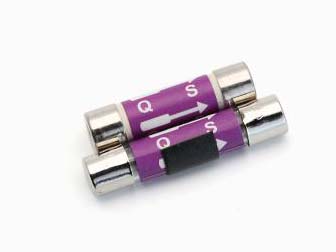





Danke für die ausführliche Erläuterung. Ich selbst habe seit gestern den Sicherungshalter Silber mit der Violett Sicherung. Bin jetzt schon sehr zufrieden und hoffe, dass sich in den nächsten Tagen bis zwei Wochen sich noch einiges positiv verändern wird. Aber selbst jetzt bin ich schon sehr zufrieden.
This is utter nonsense. By supporting these charlatans you are suborning fraud. Of course a replacement fuse will not cause your system to change its characteristics, and I think you know that.
Hello Ted,
No one’s asking you to believe what we’re saying. But instead of being an armchair skeptic try one out for yourself, then report back. I’d love to hear your feedback then.
Clement Perry
If you would organize a double blinded listening session, you could not tell a difference between 2k fuse from 2c one…
once you hear will know what the different?
If people only knew what immense technical bottlenecks the studios were facing who did their favorite recordings by sheer mastery of acoustics, mic placement and technical craftsmanship – those guys would have loughed out loud at the concept of a FUSE making their 3rd copy of a 3rd copy sound MUCH MUCH better 😂
Btw I always tend to ask HiFi nerds which acoustician measured and realized their (hopefully!!) resonance free and controlled listening acoustics and if they know the grounding resistance in their location. Most have a curtain and wooden floor, and place speakers 50cm from the wall, giving rise to dramatic comb filtering that will ultimately ruin ANY playback system and can actually be easily MEASURED, and, of course, heard!
That said, please guys, do DOUBLE BLIND TESTS. With each of your products. Show us audio engineers clear positive results and we will change our minds and start complicated examinations to find an explanation for a FUSE that is supposed to change the sound of a HiFi system more than putting the same money into better acoustics treatment!
Best, RT
Clement,
Came across this today. Noted that QSA recommended you insert your rear panel fuses with the arrow pointing towards the chassis, not the screw cap. Is this something unique about your amps or their general rule? I had recently purchased some yellow QSA fuses for my amps and inserted them with the arrows pointing towards the cap end as the current flow is wired that way. In fact, every external back panel fuse holder in my experience is wired that way.
Your thoughts or a contact @QSA would be helpful.
Hi Tokiko,
I am not sure if it’s the general rule, but I was told to start with the fuse aiming inwards towards the component. The first time I tried them, I had them going in any direction and that failed to win me over. Once pointed toward the chassis, the sound becoming universally stellar and thus highly recommended.
Thanks for writing
Happy New Year
Clement Perry
I believe QSA should make a comment about this, because I, too, like Tokiko, found this information confusing. I find it wierd that QSA recommends the direction towards the chassis not the cap as is usually the case.
You need to know which end of your fuse compartment is LIVE and which is NEUTRAL. The direction (of the arrow) is from LIVE to NEUTRAL.
If one end of your fuse holder is live and the other neutral, all you will hear when you insert the fuse is a bang! It’s called a dead short!